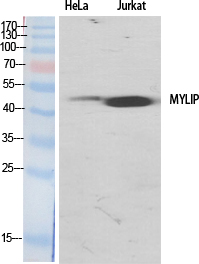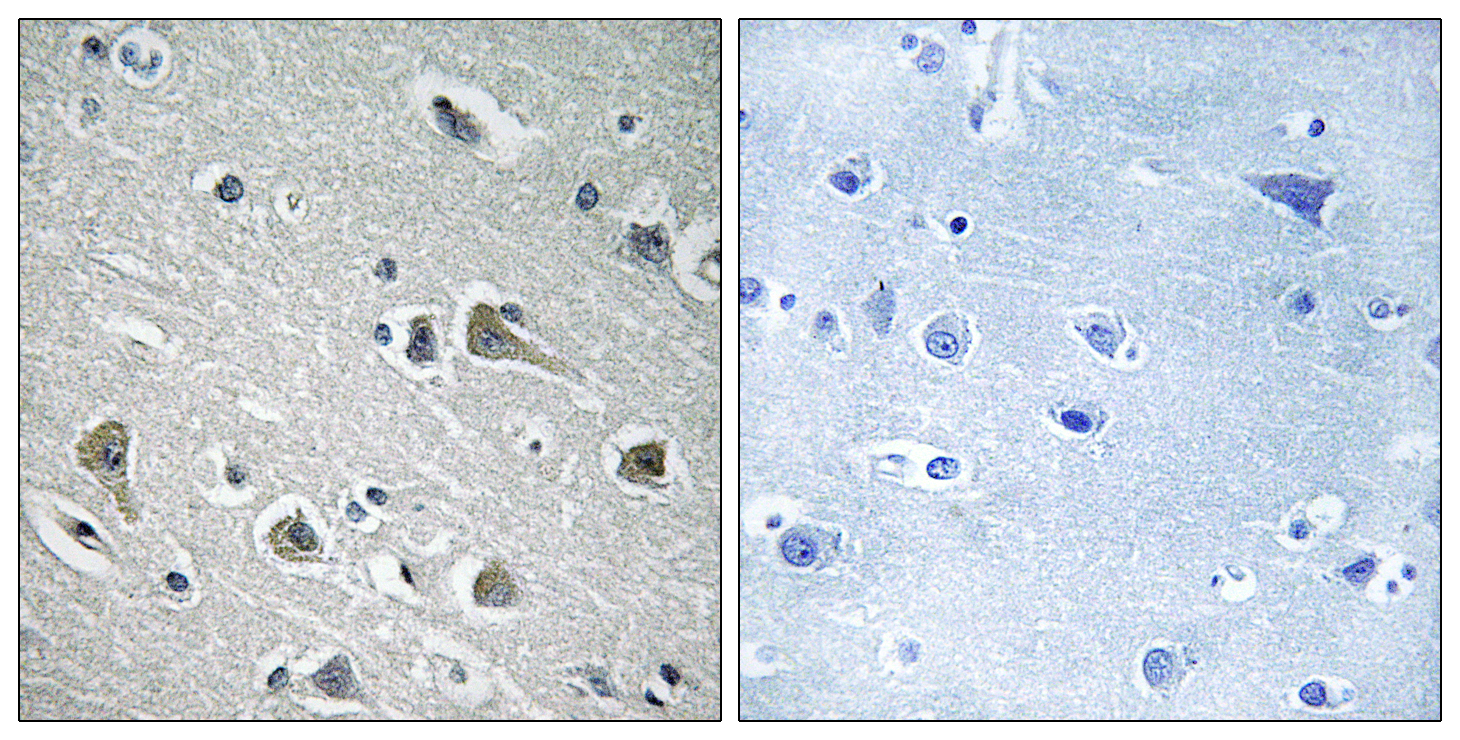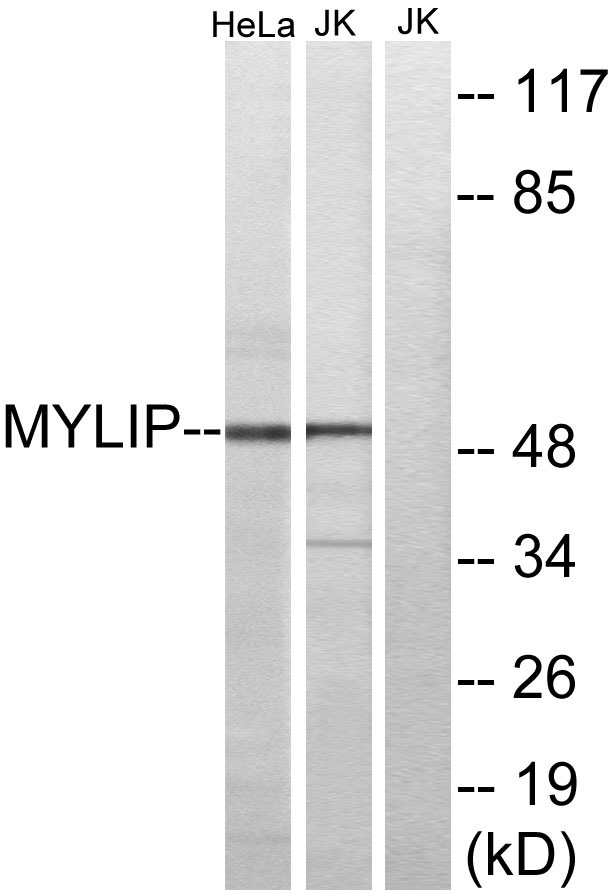MYLIP Polyclonal Antibody
- Catalog No.:YT2939
- Applications:WB;IHC;IF;ELISA
- Reactivity:Human;Mouse;Rat
- Target:
- MYLIP
- Fields:
- >>Cholesterol metabolism
- Gene Name:
- MYLIP
- Protein Name:
- E3 ubiquitin-protein ligase MYLIP
- Human Gene Id:
- 29116
- Human Swiss Prot No:
- Q8WY64
- Mouse Gene Id:
- 218203
- Mouse Swiss Prot No:
- Q8BM54
- Rat Gene Id:
- 306825
- Rat Swiss Prot No:
- D3ZDI6
- Immunogen:
- The antiserum was produced against synthesized peptide derived from human MYLIP. AA range:161-210
- Specificity:
- MYLIP Polyclonal Antibody detects endogenous levels of MYLIP protein.
- Formulation:
- Liquid in PBS containing 50% glycerol, 0.5% BSA and 0.02% sodium azide.
- Source:
- Polyclonal, Rabbit,IgG
- Dilution:
- WB 1:500 - 1:2000. IHC 1:100 - 1:300. ELISA: 1:20000.. IF 1:50-200
- Purification:
- The antibody was affinity-purified from rabbit antiserum by affinity-chromatography using epitope-specific immunogen.
- Concentration:
- 1 mg/ml
- Storage Stability:
- -15°C to -25°C/1 year(Do not lower than -25°C)
- Other Name:
- MYLIP;BZF1;IDOL;BM-023;PP5242;E3 ubiquitin-protein ligase MYLIP;Inducible degrader of the LDL-receptor;Idol;Myosin regulatory light chain interacting protein;MIR
- Observed Band(KD):
- 50kD
- Background:
- The ERM protein family members ezrin, radixin, and moesin are cytoskeletal effector proteins linking actin to membrane-bound proteins at the cell surface. Myosin regulatory light chain interacting protein (MYLIP) is a novel ERM-like protein that interacts with myosin regulatory light chain and inhibits neurite outgrowth. [provided by RefSeq, Jul 2008],
- Function:
- developmental stage:Expressed in fetal tissues and higher levels were detected in placenta and fetal lung.,domain:The RING domain mediates ubiquitination and the neurite outgrowth inhibitory activity.,function:E3 ubiquitin-protein ligase that mediates ubiquitination and subsequent proteasomal degradation of myosin regulatory light chain (MRLC). Stable or transient overexpression of MIR induces proteasomal degradation of MRLC inhibiting neurite outgrowth in presence of NGF. MIR counteracts the stabilization of MRLC by MIR-interacting saposin-like protein (MSAP/TMEM4) and reduces MSAP-stimulated neurite outgrowth.,pathway:Protein modification; protein ubiquitination.,PTM:Autoubiquitinated.,similarity:Contains 1 FERM domain.,similarity:Contains 1 RING-type zinc finger.,subunit:Interacts with myosin regulatory light chain (MRLC) and TMEM4.,tissue specificity:Ubiquitously expressed.,
- Subcellular Location:
- Cytoplasm . Cell membrane ; Peripheral membrane protein .
- Expression:
- Ubiquitously expressed.
- June 19-2018
- WESTERN IMMUNOBLOTTING PROTOCOL
- June 19-2018
- IMMUNOHISTOCHEMISTRY-PARAFFIN PROTOCOL
- June 19-2018
- IMMUNOFLUORESCENCE PROTOCOL
- September 08-2020
- FLOW-CYTOMEYRT-PROTOCOL
- May 20-2022
- Cell-Based ELISA│解您多样本WB检测之困扰
- July 13-2018
- CELL-BASED-ELISA-PROTOCOL-FOR-ACETYL-PROTEIN
- July 13-2018
- CELL-BASED-ELISA-PROTOCOL-FOR-PHOSPHO-PROTEIN
- July 13-2018
- Antibody-FAQs
- Products Images

- Western Blot analysis of various cells using MYLIP Polyclonal Antibody
.jpg)
- Western Blot analysis of Jurkat cells using MYLIP Polyclonal Antibody

- Immunohistochemistry analysis of paraffin-embedded human brain tissue, using MYLIP Antibody. The picture on the right is blocked with the synthesized peptide.

- Western blot analysis of lysates from HeLa and Jurkat cells, using MYLIP Antibody. The lane on the right is blocked with the synthesized peptide.



